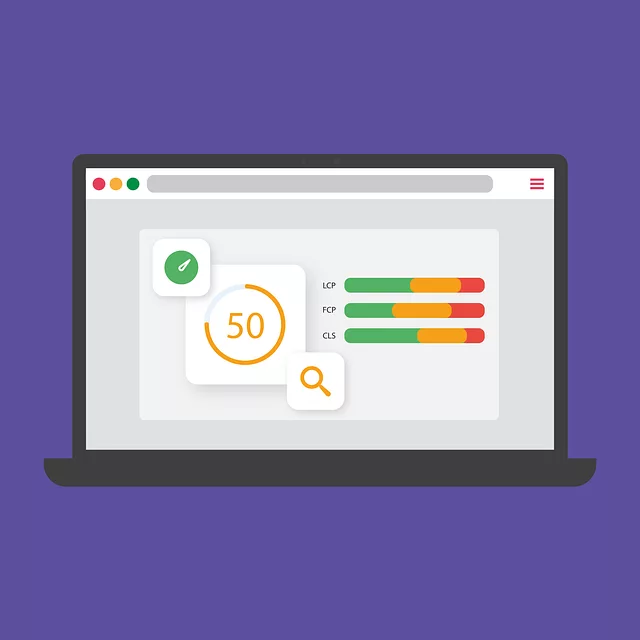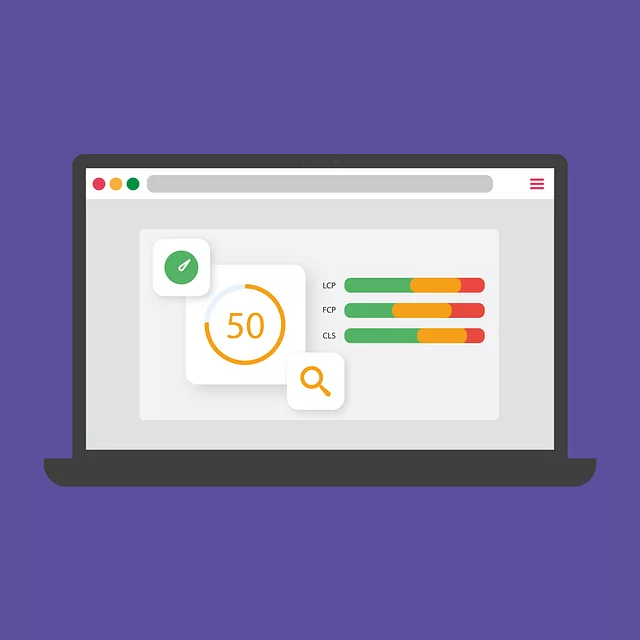Canonical tags are critical for SEO, addressing duplicate content issues and guiding search engines to index the most relevant pages. They enhance site visibility, improve user experience, and facilitate Core Web Vitals Optimization (CWV), which includes metrics like Largest Contentful Paint (LCP), First Input Delay (FID), and Cumulative Layout Shift (CLS). By prioritizing canonical tags on high-traffic pages and optimizing for CWV, websites can resolve duplicate content, improve load times, interactivity, and visual stability, ultimately boosting rankings and organic traffic. Regularly auditing and updating these tags based on best practices is essential for successful SEO. Examples of large e-commerce retailers and news websites demonstrate the positive impact of canonical tags on duplicate content issues and user experience, while tracking CWV performance enables data-driven adjustments to maintain competitiveness in the digital era.
In today’s digital landscape, Canonical Tag SEO plans are essential for optimizing websites and enhancing search engine rankings. This comprehensive guide delves into the intricacies of understanding and leveraging canonical tags, a powerful tool for managing duplicate content. We explore the significant impact of Core Web Vitals on search algorithms and provide strategic tips for their optimization. Through real-world case studies and best practices, this article equips you with the knowledge to effectively implement canonical tag plans, ultimately driving better results in the competitive online realm.
Understanding Canonical Tags and Their Role in SEO

Canonical tags play a crucial role in search engine optimization (SEO) by helping to organize and manage duplicate content on a website. These tags, implemented within HTML code, signal to search engines which version of a page should be indexed and ranked for specific keywords. This is especially important with the rise of dynamic content and various page variations, ensuring that search engines understand the relationship between similar pages and avoiding potential indexing issues.
By utilizing canonical tags, web developers can enhance their site’s visibility and performance in search results. It allows them to direct search engines towards the most relevant and desired version of a page, which can significantly impact user experience and Core Web Vitals optimization. This, in turn, leads to better ranking potential and overall website success.
The Impact of Core Web Vitals on Search Engine Rankings

The impact of Core Web Vitals on search engine rankings cannot be overstated. Google has explicitly stated that these metrics are a significant factor in determining website quality and, consequently, its placement in search results. Core Web Vitals Optimization is about enhancing user experience by ensuring sites load quickly, render content smoothly, and provide a good visual stability. These vitals include Largest Contentful Paint (LCP), First Input Delay (FID), and Cumulative Layout Shift (CLS). Each plays a crucial role in how users perceive and interact with a website.
For instance, LCP measures the time it takes for the main content of a webpage to load, while FID assesses the speed at which a page responds to user interactions. CLS, on the other hand, looks at whether on-screen content shifts unexpectedly as users scroll. Websites that excel in these areas tend to rank higher, attracting more organic traffic. SEO strategists and web developers must prioritize Core Web Vitals Optimization to stay competitive in today’s digital landscape.
Strategies for Optimizing Canonical Tags for Core Web Vitals

Optimizing canonical tags for Core Web Vitals involves a strategic approach to ensure your website’s SEO performance. One key strategy is to prioritize the use of canonical tags on critical pages, especially those with high traffic and significant search engine visibility. By identifying these key pages and implementing the right canonical tags, you can mitigate duplicate content issues and direct search engines to the most relevant version of your site.
Additionally, focusing on Core Web Vitals like load time, interactivity, and visual stability is crucial. Ensure that your canonicalized pages load quickly, offer a responsive user experience, and maintain consistent visual integrity across devices. This not only enhances user satisfaction but also signals to search engines that your website is of high quality and worth ranking highly. Regularly auditing and updating canonical tags in line with Core Web Vitals Optimization best practices can significantly impact your site’s search engine visibility and overall SEO strategy.
Implementing Canonical Tags: Best Practices and Tools

Implementing canonical tags is a strategic move for search engine optimization (SEO), ensuring that web pages are properly credited and indexed by search engines. These tags help resolve duplicate content issues, a common challenge in today’s digital landscape where websites often have multiple versions of the same page accessible through different URLs. Best practices dictate that each unique piece of content should have its own distinct URL, with canonical tags serving as a guide for search crawlers.
When setting up canonical tags, webmasters should consider using rel=”canonical” HTTP headers or HTML tags, pointing to the preferred version of a webpage. Tools like Google Search Console and SEO plugins offer assistance in identifying duplicate content and suggesting canonical tags. Core Web Vitals Optimization also plays a role; ensuring pages load quickly and function flawlessly enhances user experience and signals search engines that your site is high-quality and reliable.
Case Studies: Successful Canonical Tag Optimization Campaigns

Successful canonical tag optimization campaigns offer valuable case studies for SEO strategists. By examining these examples, we can understand how effective use of canonical tags contributes to improved search engine visibility and user experience. One notable instance involves a large e-commerce retailer who implemented canonical tags to address duplicate content issues caused by their extensive product pages. This strategy led to significant reductions in crawl errors and enhanced focus on high-quality, primary pages, resulting in a boost in organic traffic and Core Web Vitals scores.
Another compelling case study involves a news website that utilized canonical tags to manage multiple versions of the same article syndicated across various platforms. By tagging each unique platform’s version with its respective URL, they prevented duplicate content penalties while ensuring search engines indexed the most relevant and up-to-date content. This approach not only improved their site’s SEO but also facilitated better user navigation through a more streamlined content hierarchy.
Measuring Success: Analyzing the Effectiveness of Your Plan

Measuring success is a critical step in any SEO strategy, and for Canonical Tag plans, it involves analyzing the effectiveness of your approach to ensure it aligns with your broader search engine optimization goals. One key metric to track is Core Web Vitals (CWV) Optimization. CWV refers to user experience metrics that help gauge the overall quality and performance of a web page, as perceived by real users. These include Load Time, Interactivity, and Visual Stability, all of which are essential for delivering an optimal browsing experience. By focusing on improving these factors, your Canonical Tag strategy can enhance website accessibility, reduce bounce rates, and increase user engagement.
Regularly monitoring CWV performance allows you to identify areas where your plan is thriving and pinpoint potential bottlenecks. For instance, if load times remain high despite your efforts, it might signal the need for further optimization or a shift in hosting infrastructure. Similarly, analyzing interactivity data can reveal opportunities to improve website navigation or content presentation. Regular analysis enables you to make data-driven adjustments, ensuring that your Canonical Tag SEO plan remains agile and effective in an ever-evolving digital landscape.
